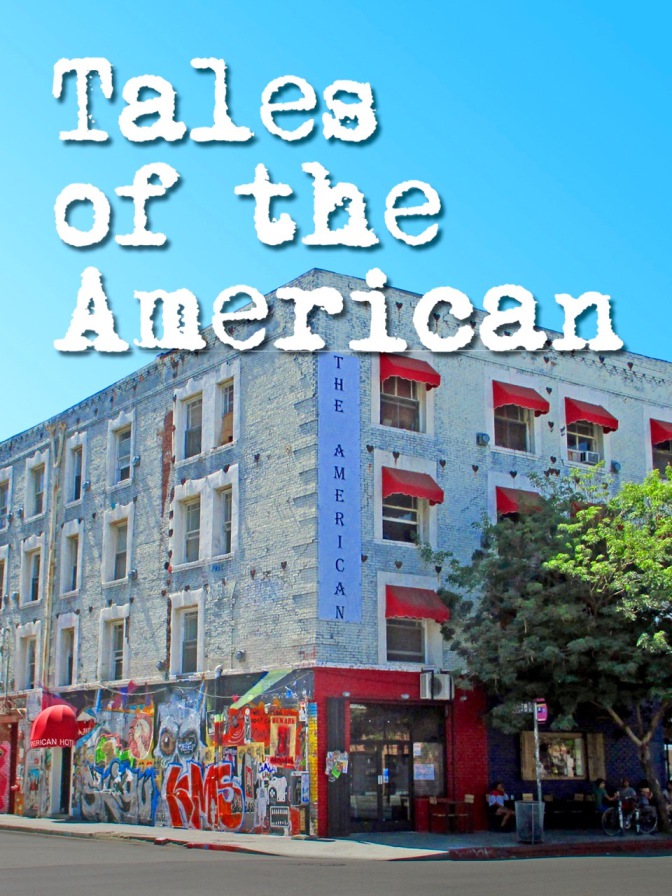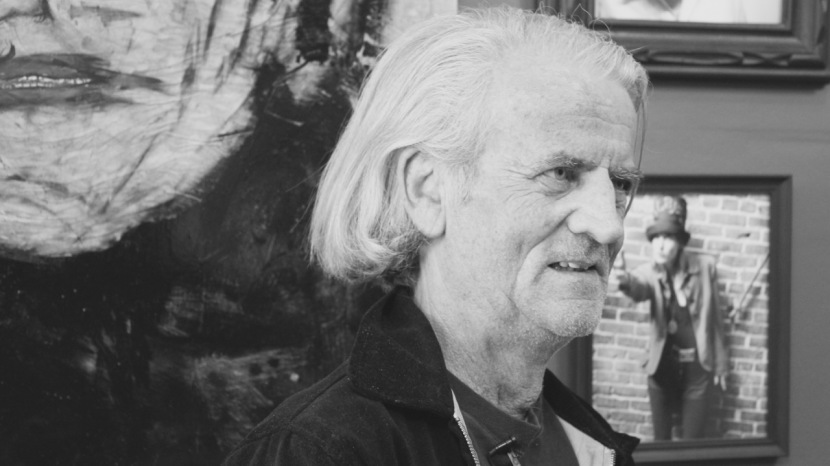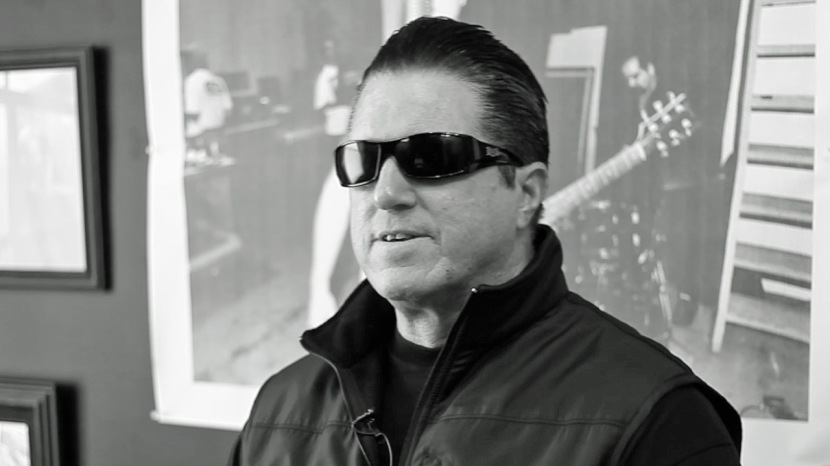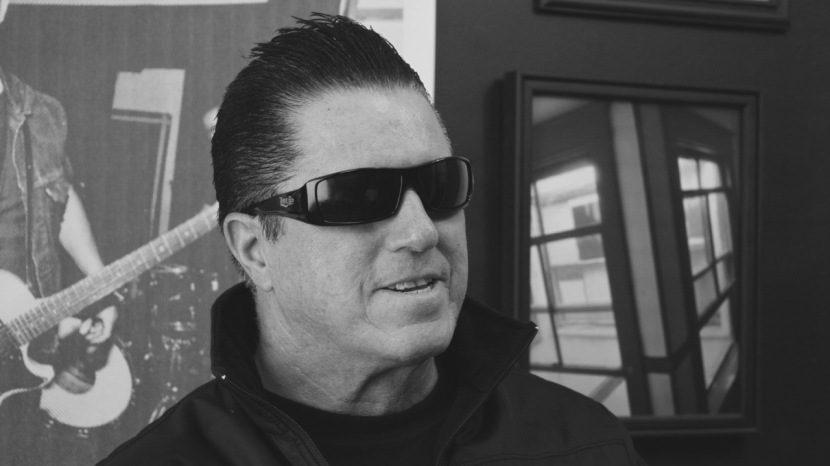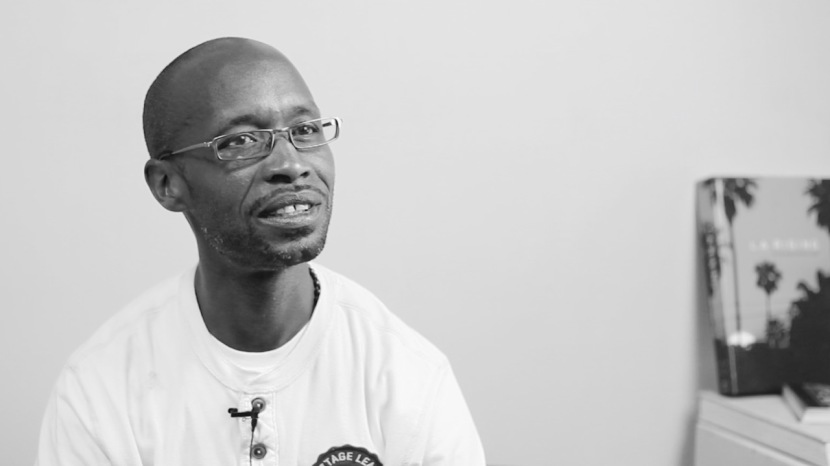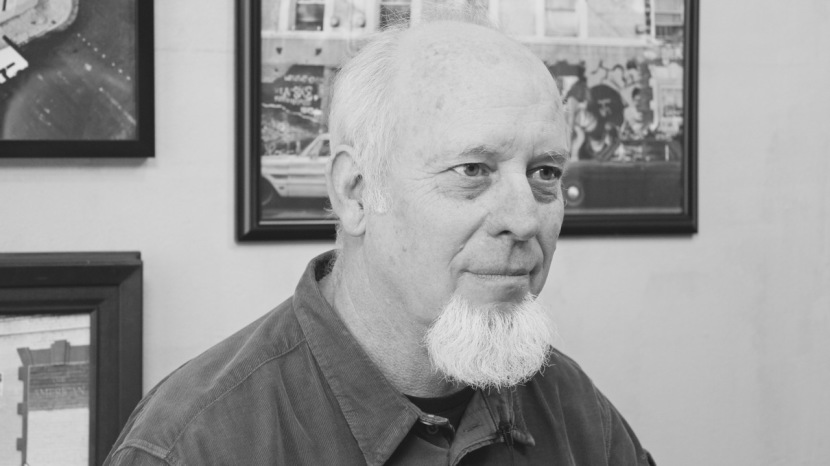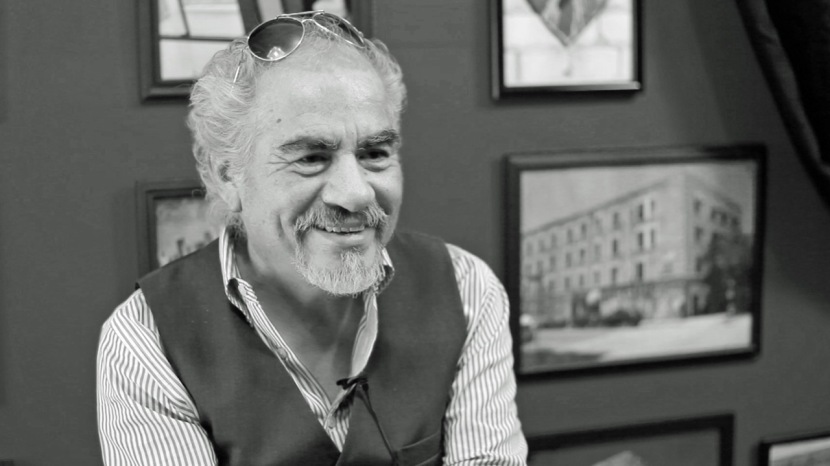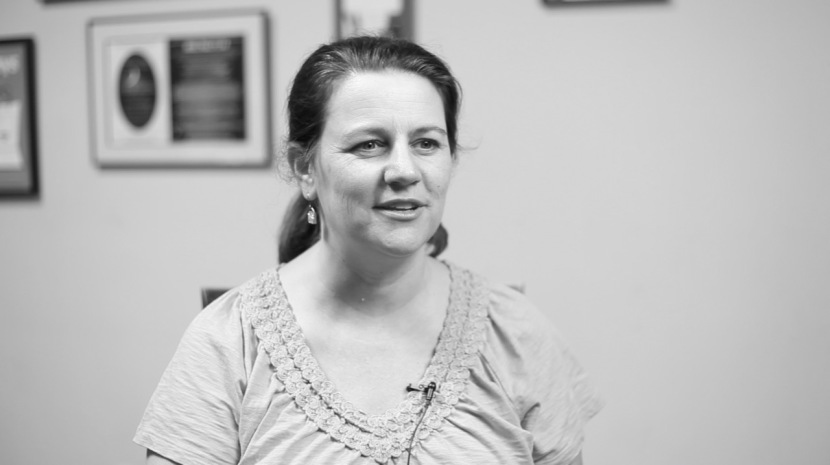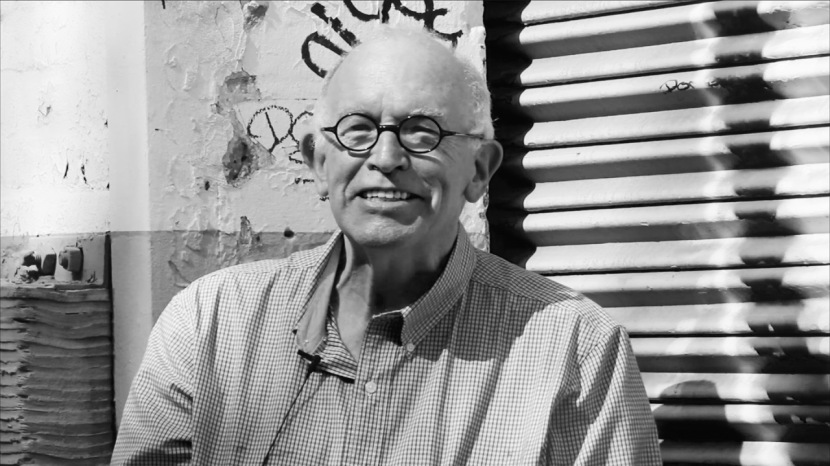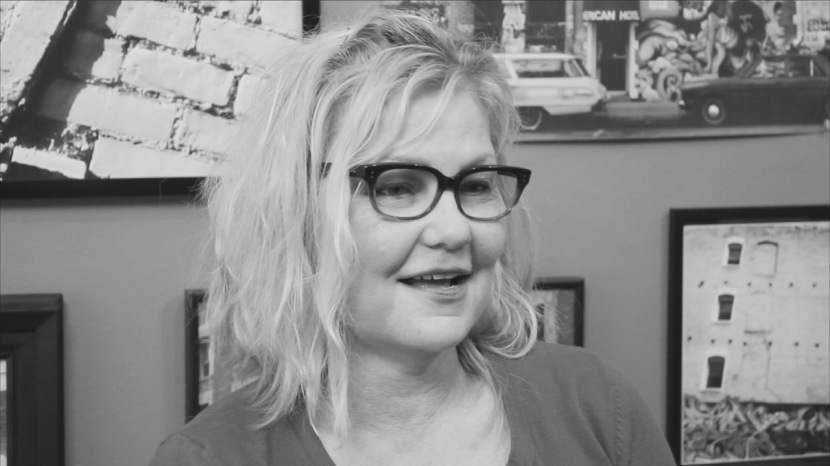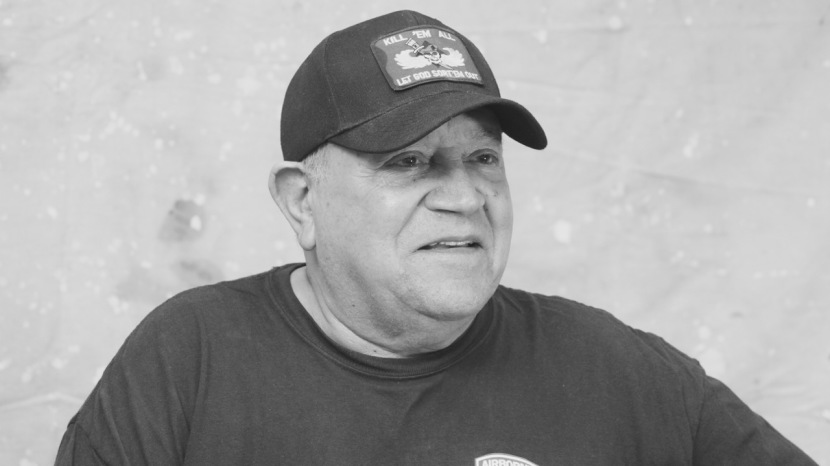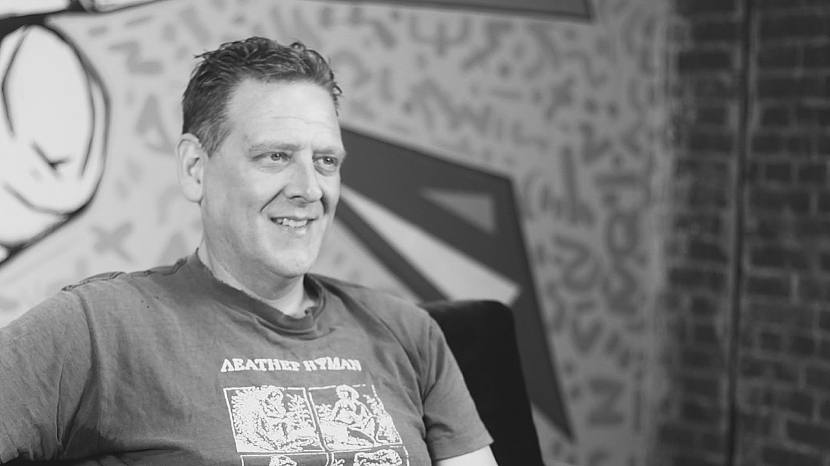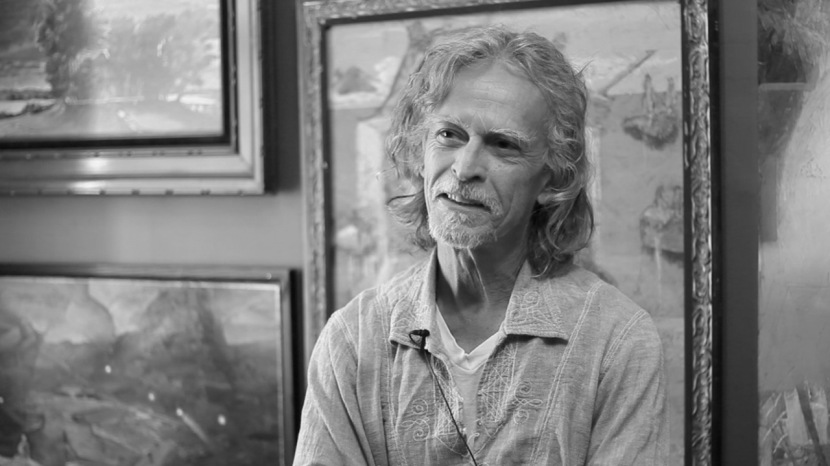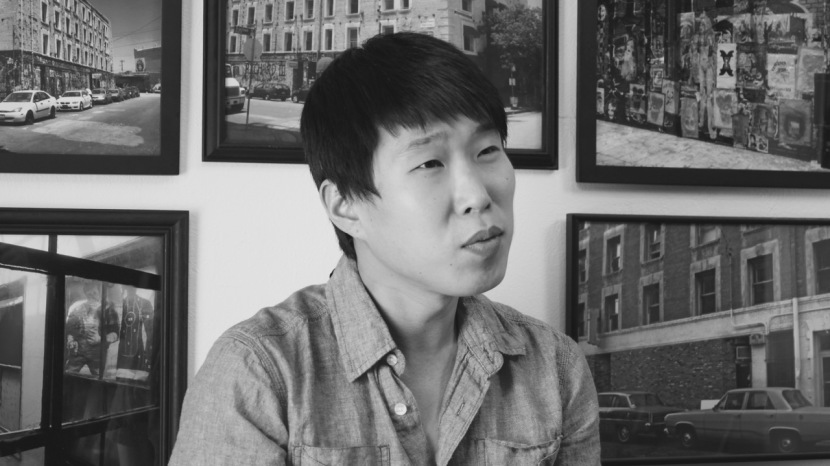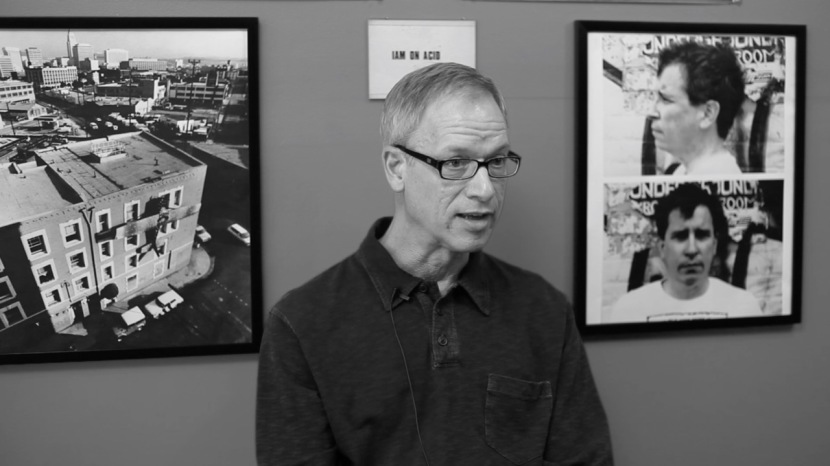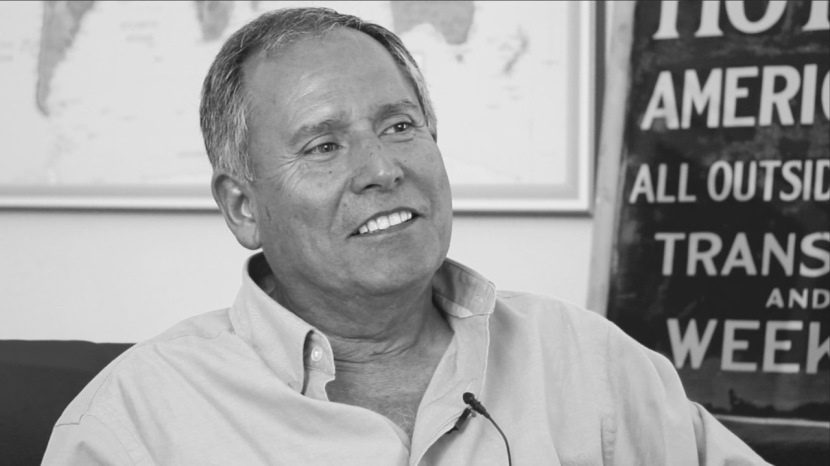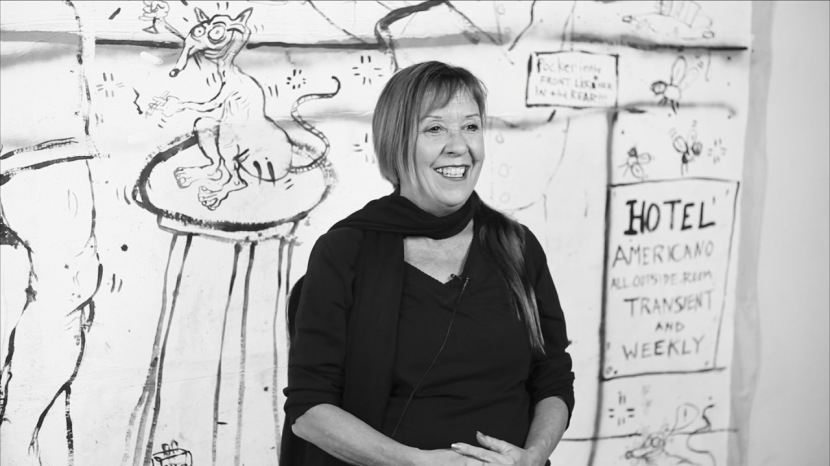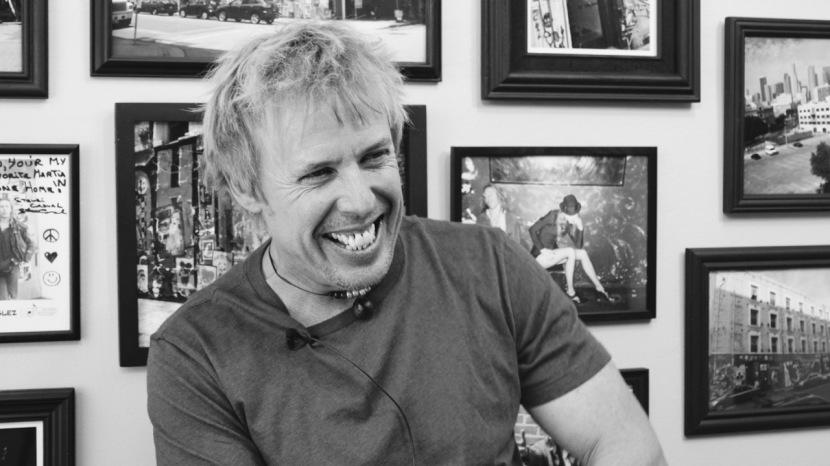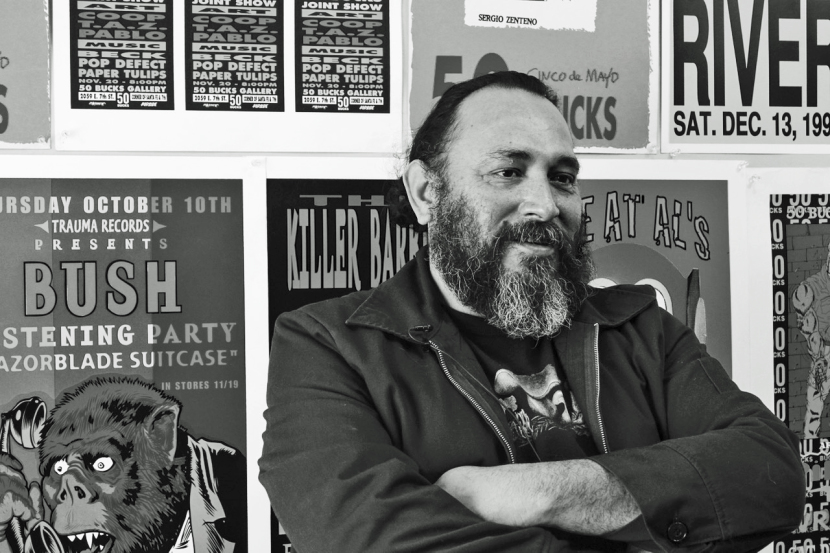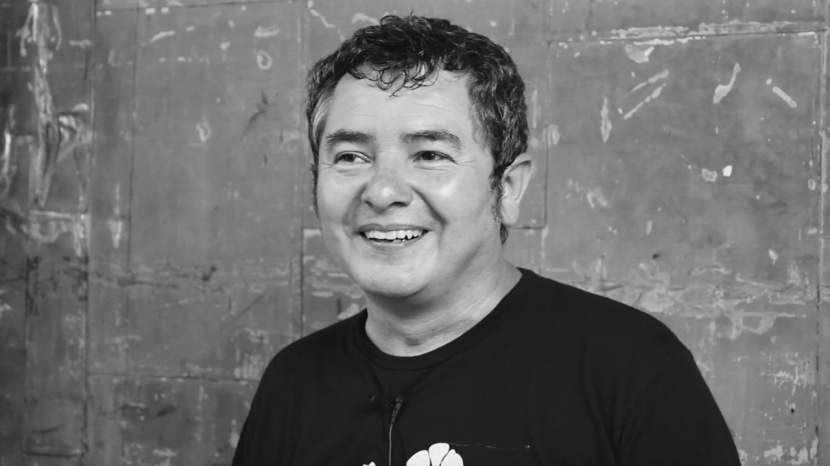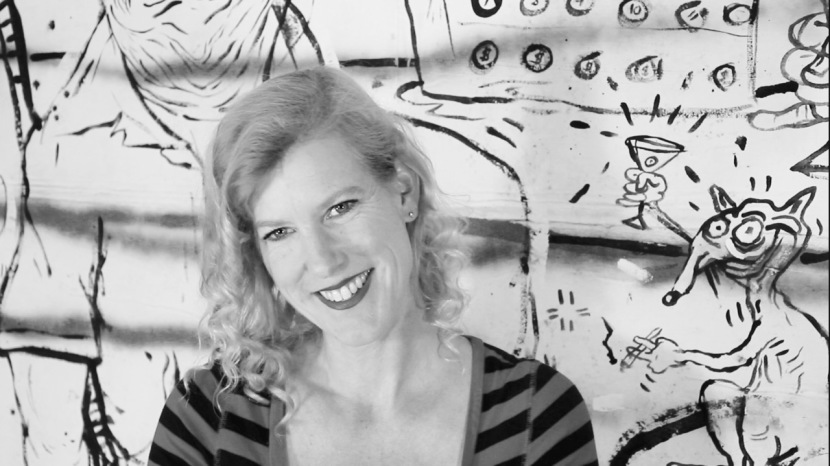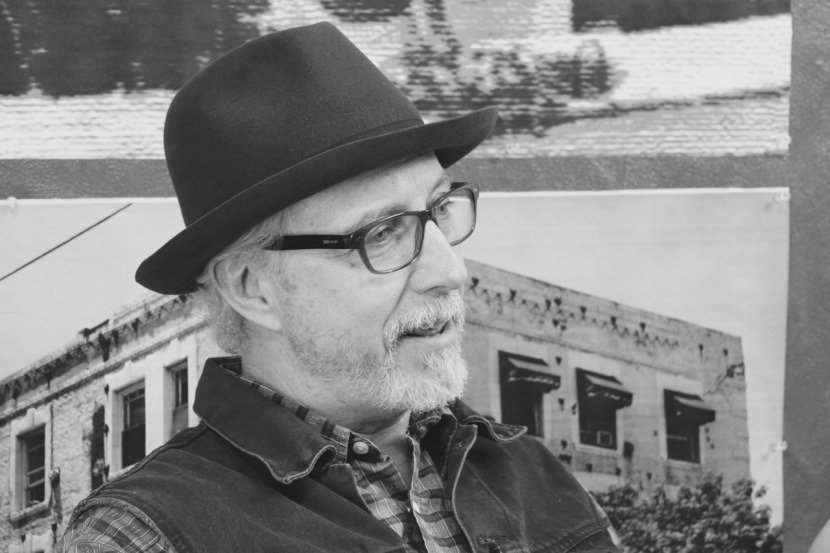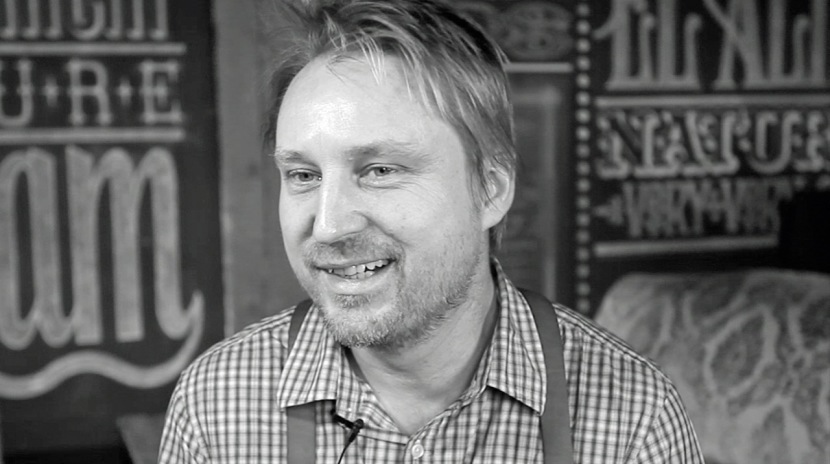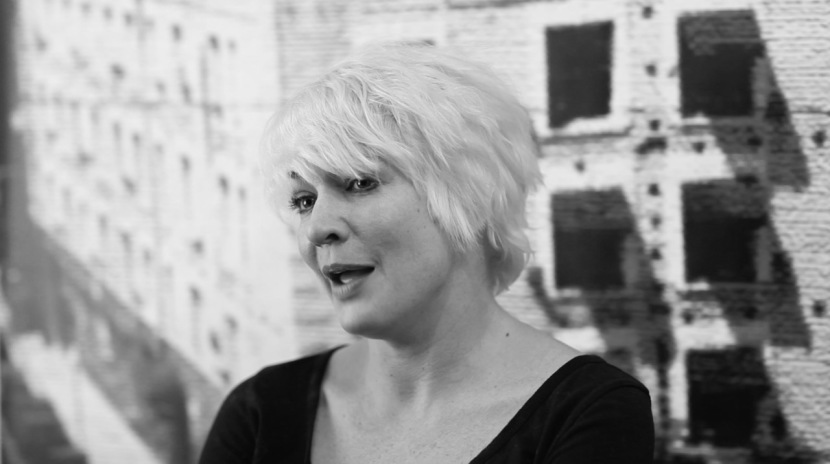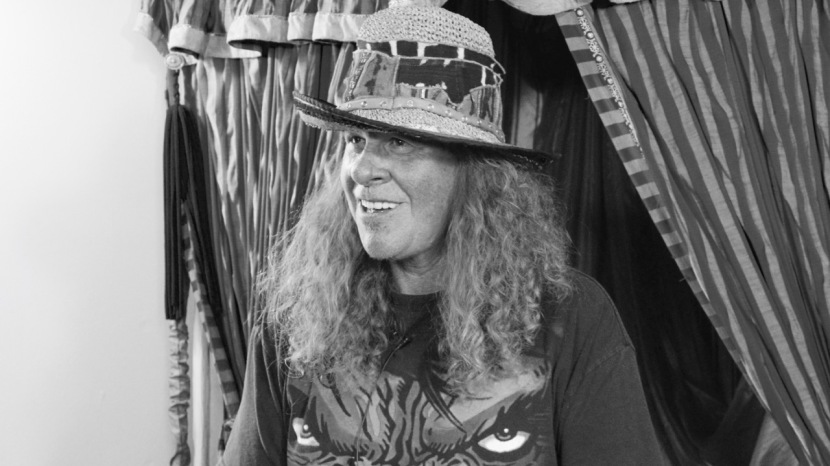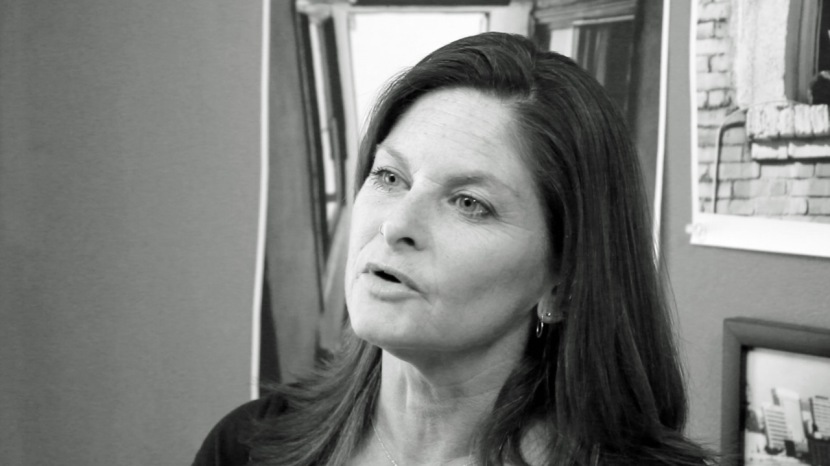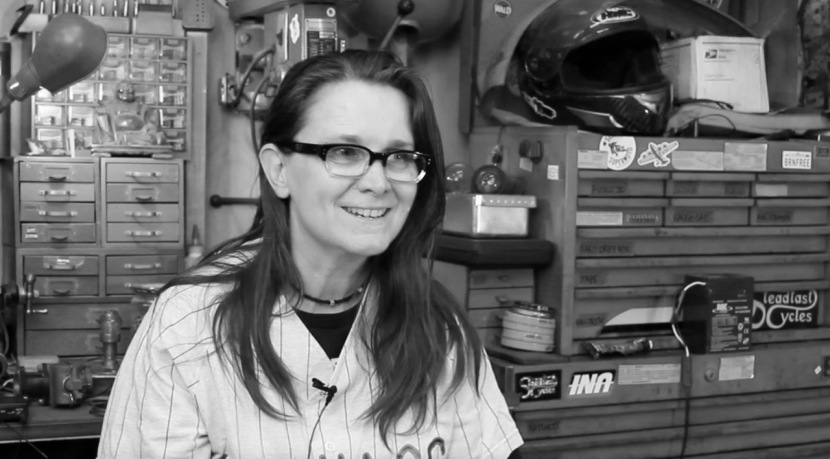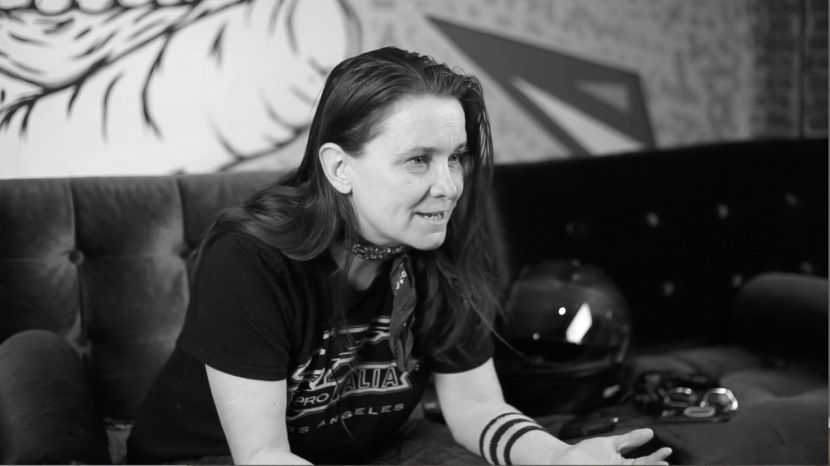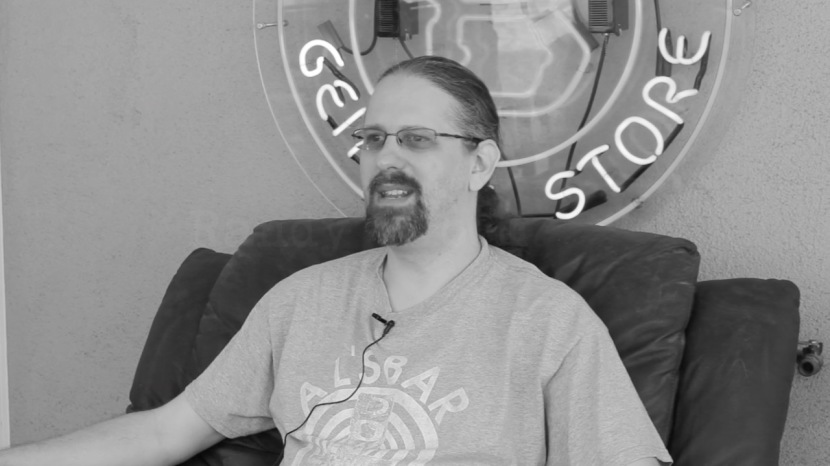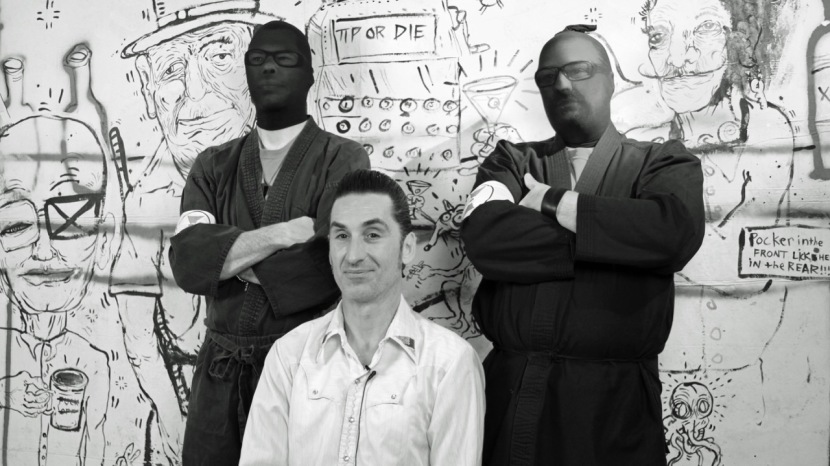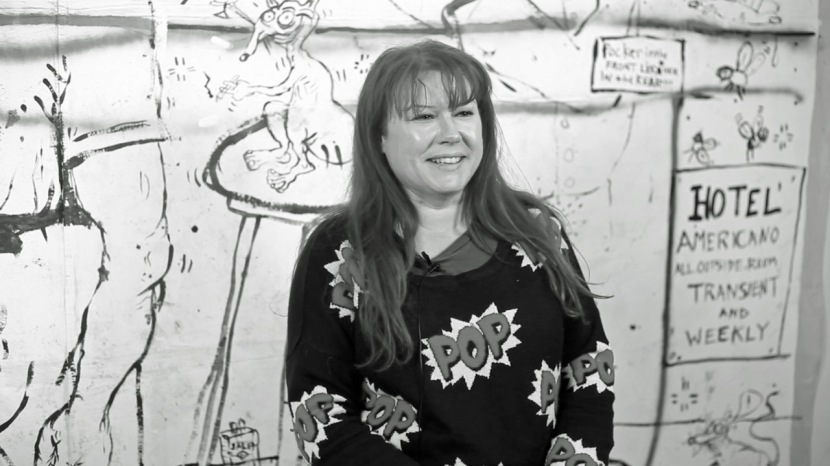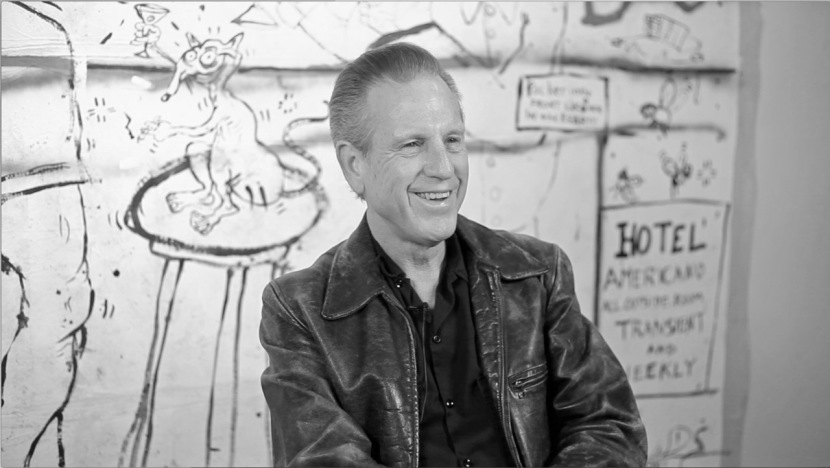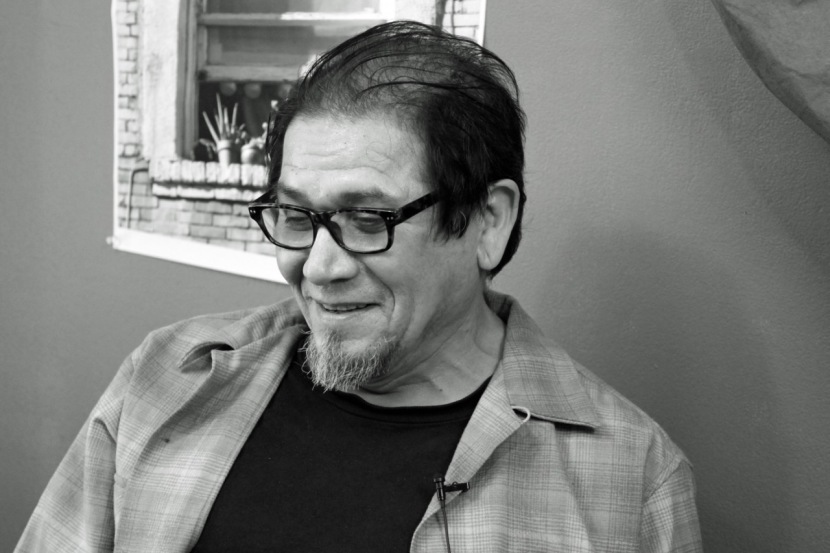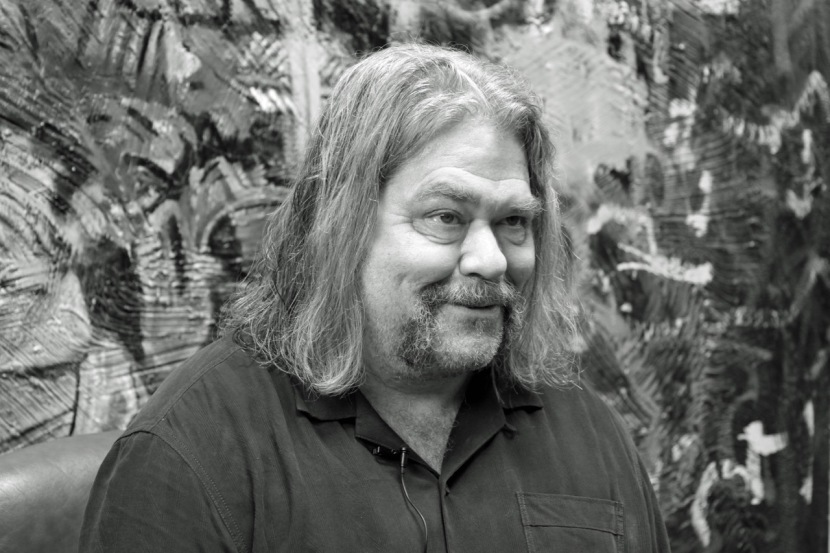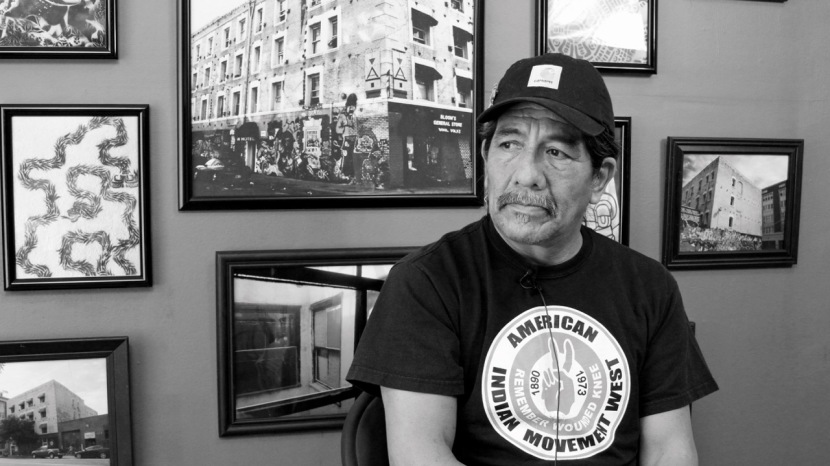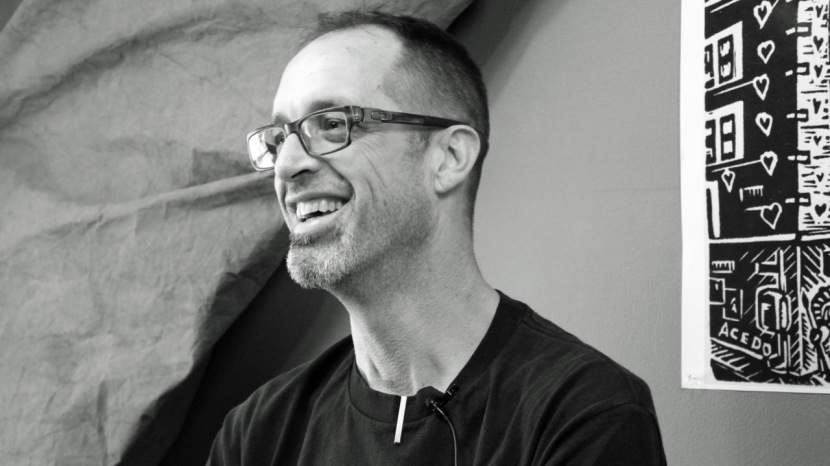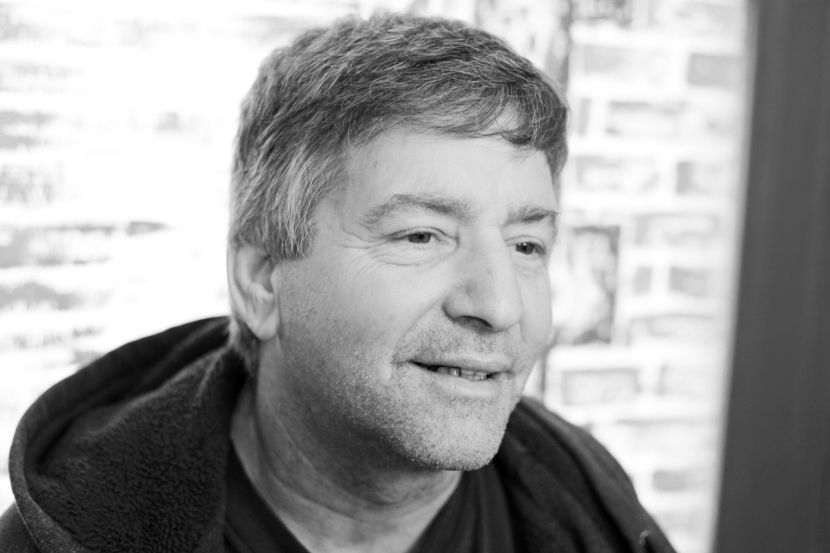Interviews A - E
Terry Ellsworth (Interviewed January & March 2014)
Terry Ellsworth moved into the American Hotel in 1994 and soon felt “like a spy in the house of art.” In the Downtown Los Angeles Arts District, Ellsworth discovered a community of artists following their hearts and supporting each other’s dreams. He also forged lifelong friendships that helped him through a life-saving heart transplant. “When I landed at Traction and Hewitt,” he says, “I found my part of the forest.” (Click on photo to watch interview.)
Jesse Easter — Part 2 (Interviewed Jan. 25, 2014)
Jesse Easter is a musician and songwriter who has lived at the American Hotel, off and on, for nearly 40 years. On vocals and lead guitar, he fronted bands that headlined at Al’s Bar, including Barbed Wire, a “reggae orchestra” of the 1980s, and the Devil Dogs, a power trio popular in the L.A. art scene of the ‘90s and 2000s. Easter now heads a new incarnation of that band, which, before the pandemic, had been recording and playing gigs. (Click on photo to watch interview.)
Jesse Easter — Part 1 (Interviewed Jan. 25, 2014)
Even as a child, musician Jesse Easter had a dream of living in a hotel amid the hustle and bustle of a big city. “I never saw myself owning a home. … I wanted to hear sirens and gunshots,” Easter says. “I’m an urban guy.” He found his dream at the corner of Traction and Hewitt at the heart of what is now the Downtown L.A. Arts District, where he has lived on the fourth floor of the American Hotel for much of the past four decades.(Click on photo to watch interview.)
Marcenus "MC" Earl (Interviewed June 4, 2014)
Marcenus “MC” Earl started acting with Cornerstone Theater Company in 1993, when the troupe staged a series of community productions in Earl’s hometown of Watts. After 15 years of active on- and off-stage participation, Earl joined the ensemble of Cornerstone and continues to work with the company after its relocation out of the Downtown L.A. Arts District. Earl also writes and performs spoken word. (Click on photo to watch interview.)
James Duck (Interviewed Feb. 1, 2014)
In 1978, James Duck moved into a Downtown L.A. studio — illegally, as so many artists were doing at the time — and quickly met up with four other recent transplants with whom he would form a band and forge lifelong friendships. The Party Boys — with a raw, tribal sound and wicked sense of humor — were the first headliners at Al’s Bar in 1980, becoming a legend of Los Angeles punk. (Click on photo to watch interview.)
Richard Duardo (Interviewed Feb. 20, 2014)
When master printmaker Richard Duardo opened a studio across the street from Al’s Bar & the American Hotel, he had no idea how “ass-backwards successful” it would be. Throughout the 1980s & ’90s, Duardo collaborated there with world-famous artists — Keith Haring, Carlos Almaraz, David Hockney, et al. — on fine art editions of their work. He was also an artist in his own right, showing in galleries nationwide. Duardo died in November 2014. (Click on photo to watch video.)
Paula Donnelly (Interviewed July 1, 2014)
Native Angeleno Paula Donnelly is director of engagement at Cornerstone Theater Company, an ensemble of playwrights, actors and musicians who create theatrical productions in collaboration with the residents and artists in the community they are portraying. For nearly two decades, Cornerstone was headquartered in the Downtown Los Angeles Arts District, next door to the American Hotel on Traction Avenue. (Click on photo to watch interview.)
Carl Davis (Interviewed June 24, 2014)
In 1980, Carl Davis moved into the Citizens Warehouse on the eastern edge of Downtown Los Angeles, joining a group of artists that had made the century-old building their home. An architect by trade, Davis started making art himself, and he opened the Art Dock, a “drive-by gallery” in the loading area of his studio. For much of the 1980s, the Art Dock was a symbol of the offbeat and vibrant climate of what became known as the Arts District. (Click on photo to watch interview.)
Sandi Cruze (Interviewed Feb. 6, 2014)
Sandi Cruze was a single mom in the early 1980s when she started slinging beers at Al’s Bar. She quickly befriended the artists moving into the vacant warehouses and factories in the area. While studying cosmetology, Cruze set up shop in Al’s, cutting hair and “getting really good by being really bad” on the patrons. She later opened MoHair (the Museum of Hair), a Pasadena salon and gallery decorated with art she purchased from friends downtown. (Click on photo to watch interview.)
Carlos Cruz (Interviewed Oct. 29, 2014)
Carlos Cruz, who hails from Puerto Rico by way of New York, has been living in the Downtown Los Angeles Arts District for the better part of two decades, including a three-year stint as a resident of the American Hotel. “That hotel was where the fun was,” Cruz says, while admitting that, at the time, there wasn’t much else going on around the corner of Traction Avenue and Hewitt Street. (Click on photo to watch video.)
John Collinson (Interviewed Feb. 12, 2017)
John Collinson has played drums with several Los Angeles bands since moving to Southern California from Columbus, OH, nearly four decades ago. For much of the 1990s, he was the drummer for Leather Hyman, a punk quartet “deeply rooted in Meat Puppets and the Velvet Underground,” according to Collinson. He played at Al’s Bar many times, including as a member of the Golden Rulers at the Al’s Bar Alumni Festival in 2013. (Click on photo to watch interview.)
Jaime Colindres (Interviewed March 12, 2014)
Guatemalan native Jaime Colindres is a painter who creates his work mostly using found objects and salvaged pieces of particle board. Besides a few forays to mountain communities around Southern California — a few of which ended in disaster — he has spent much of the past three decades as a resident of the American Hotel and an active member of the downtown Los Angeles Arts District community. (Click on photo to watch interview.)
Steven Choe (Interviewed April 28, 2014)
Steven Choe is an aspiring writer who pays his bills by working as a waiter. Throughout the filming of the documentary “Tales of the American,” Choe was serving sake and seaweed salads at Zip Sushi, on the corner of 3rd Street and Traction Avenue in the downtown L.A. Arts District. He became friends with many of the artists in the area before Zip Sushi unfortunately closed in June 2016. (Click on photo to watch interview.)
Dan Chapman (Interviewed Feb. 12, 2014)
After getting a degree in art from USC, Dan Chapman moved into a downtown L.A. warehouse in 1979, finding himself at the heart of a burgeoning creative community energized by the Party Boys and Jack Marquette, the art-punk band’s manager. Throughout the 1980s, Chapman, a painter, and Marquette, who that year founded the Brave Dog club, shared a loft at 5th and Colyton, a few short blocks from the American Hotel and Al’s Bar. (Click on photo to watch interview.)
Leonard Celaya (Interviewed July 17, 2014)
Leonard Celaya’s father bought the grocery on the ground floor of the American Hotel in 1942 from a Japanese man being sent to Manzanar. Oliver Celaya operated Oliver’s Market — with help from sons Leonard and Hilbie — until 1985. Leonard Celaya managed Al’s Bar and ran Oliver's Market before enjoying a career in the U.S. Postal Service. The Celaya family at one time owned the American Hotel and other buildings in what is now the Arts District. (Click on photo to watch video.)
Mona Jean Cedar (Interviewed Nov. 9, 2015)
Mona Jean Cedar is a poet and dancer who came to Al’s Bar in the mid-1980s and established herself in the unique position of sign language interpreter for the various punk bands who played there. Known as the Psycho Sign Go-Go Dancer, Cedar performed in clubs all around Los Angeles alongside such bands as X, Firehose and Lutefisk, as well as being a regular member of the Screamin’ Sirens. (Click on photo to watch interview.)
Stevie Casual (Interviewed Jan. 15, 2014)
Stevie Casual came to L.A. to be a rock star. He moved into the American Hotel in the early 1990s and worked in the film industry as a lighting technician. Casual played guitar in Rommelz Gogglez, a punk band that had gigs at Al’s Bar and other venues around Los Angeles. He was a central figure in the community that came to be called the Downtown Arts District. He died in his room at the American Hotel in September 2017. He was 50. (Click on photo to watch interview,)
Rolo Castillo (Interviewed Jan. 12, 2014)
Rolo Castillo was a teenager when he happened upon the American Hotel in the 1980s. His first day at the corner of Traction and Hewitt, he found his dream job in the silkscreen studio of Richard Duardo. Over the next two decades, Castillo established himself at the center of the burgeoning Arts District community as the founder of 50 Bucks Gallery, an innovative art and music venue at the corner of 7th Street and Santa Fe Avenue. (Click on photo to watch interview.)
Bob Cantu (Interviewed Aug. 1, 2014)
In his late teens, L.A. native Bob Cantu traveled from the San Gabriel Valley with his friends to enjoy punk rock at the various clubs that flourished in downtown Los Angeles and Hollywood in the 1980s. His passion turned into a career as a reporter and photographer for fanzines such as Flipside, and later he became a music promoter, booking shows at Al’s Bar first, then later at the Redwood Bar on 2nd Street and Café Nela in Cypress Park. (Click on photo to watch interview.)
Stacey Little Cannizzaro (Interviewed May 8, 2015)
Stacey Little Cannizzaro was bartender at Al’s Bar from 1990 (when she was just shy of 21) until the notorious punk rock haven was abruptly shuttered in August 2001. Stunningly beautiful and known for her edgy fashion sense, Stay-C — her rapper name — was at the center of all the action in the community that came to be called the Downtown L.A. Arts District. She was interviewed in Vermont, but recently moved back to L.A. (Click on photo to watch interview.)
Gary Callahan (Interviewed April 10, 2014)
Painter Gary Callahan moved into a loft at Factory Place shortly after the 1992 Los Angeles riots, and he has been an active member of the downtown art community ever since. His work — mostly figurative murals and wall ornamentation — adorns homes all over the city, and his monumental portraits have been featured at art events such as Bloomfest, a celebration of activist Joel Bloom and the Arts District community he championed. (Click on photo to watch interview.)
Michael Burke (Interviewed March 13, 2014)
After studying photography in Santa Barbara, Michael Burke joined the downtown L.A. Arts District community in 1996, leasing a loft in the building at 810 E. 1st St. Originally from Liverpool, Burke worked at Café Metropol — near 3rd Street and Santa Fe Avenue — until it closed, and in 2011, he decided to open a gastropub at the same location. Eat.Drink.Americano is still a popular eatery for Arts District visitors and residents. (Click on photo to watch interview.)
Anna Broome (Interviewed Jan. 12, 2014)
Anna Broome is a poet, actor and painter who founded and produces a community arts showcase called the Anna Broome Room at Art Share L.A. in the downtown Los Angeles Arts District. Originally from Tennessee, Broome moved to Southern California to work in advertising, but the bohemian life beckoned, and she answered the call by moving downtown and devoting herself to artistic pursuits. (Click on photo to watch interview.)
Jay Bright (Interviewed Sept. 20, 2014)
Jay Bright is an actor who settled in Los Angeles in 1979. Throughout the 1980s, Bright was a part of the downtown art community, living in the American Hotel, as well as other loft buildings nearby. A regular at Al’s Bar, he was active in the burgeoning Al’s National Theatre, including playing Tommy the Toxic Waste Monster in Joel Bloom’s 1987 ecological parable “Mayhem at Mayfield Mall. He now lives in New Orleans. (Click on photo to watch interview.)
Erika Bradberry (Interviewed Feb. 16, 2014)
Erika Bradberry is a filmmaker and artist who moved with her parents into a loft in downtown Los Angeles in the early 1980s. She did lighting for many theater productions downtown, including at Wallenboyd Theatre and at Al’s Bar. And after she was red-tagged out of her earthquake-damaged Central Avenue studio in 1987, she sought refuge with her many friends who lived at the American Hotel. (Click on photo to watch interview.)
Toast Boyd — Part 2 (Interviewed March 25, 2017)
When Toastacia “Toast” Boyd returned to Al’s Bar after living in San Francisco, she found the once-thriving live music and theater venue a dark and lifeless place. The 1992 L.A. riots had taken a toll on business — especially nightlife — in the downtown area. Toast became the booker and manager of Al’s Bar — and eventually manager of the American Hotel above it — and her indefatigable energy and creativity breathed new life into the place. (Click on photo to watch interview.)
Toast Boyd — Part 1 (Interviewed Feb. 12, 2017)
Musician Toastacia Boyd — known as Toast — came to Al’s Bar in the 1980s as part of a contingent of bands from Long Beach who took over Thursday nights at the downtown L.A. dive. Known for recognizing talent, Toast went on in the ‘90s manage the bar and prided herself on creating a haven for expression of all kinds. “We especially enjoyed people who weren’t like us,” she says. She also managed the American Hotel. (Click on photo to watch interview.)
Randy Bloom (Interviewed Nov. 15, 2014)
Computer engineer Randy Bloom is the son of Arts District pioneer Joel Bloom, who devoted much of his life to helping shape the neighborhood around the American Hotel into a place for artists. Joel Bloom opened Bloom’s General Store on the ground floor of the hotel in 1995 as a service to the community. The City of Los Angeles named the corner of Traction & 3rd Street “Joel Bloom Square” shortly before he died at 59 in 2007. (Click on photo to watch interview.)
Black Widows (with Tony Fate, Interviewed Nov. 9, 2015)
The Black Widows have been striving for world domination since 1992, using what manager Tony Fate calls “all instrumental, all evil … rock ’n’ roll.” They first played Al’s Bar in 1994, and were the unannounced last band to play a set in the legendary dive bar on the night it closed in August 2001. The Black Widows still play gigs around Los Angeles, including at the Redwood Bar & Grill on 2nd Street. (Click on photo to watch interview.)
Ella Black (Interviewed Nov. 9, 2015)
Ella Black (a.k.a. Karen Pearson) is lead singer of Ella & the Blacks, a popular “punk funk” band that played Al’s Bar and other L.A. County venues in the 1980s and ’90s. Inspired by the Supremes and early rap artists, she formed Ella & the Blacks with members of her former group Red Cross. In 1987, a date with her was the prize in a dance contest at Al's Bar. “A wonderful deranged time was had by all,” read one newspaper account. (Click on the photo to watch the interview.)
Bill Bateman (Interviewed Nov. 9, 2015)
Bill Bateman is the drummer of the Blasters, the legendary rockabilly band he started in the 1970s with guitarist brothers Phil and Dave Alvin and bass player John Bazz. Bateman also played drums in the 1981 “classic” edition of the Flesh Eaters (with vocalist Chris Desjardins, guitarist Dave Alvin, bassist John Doe and percussionist D.J. Bonebrake), which recently reunited to record an album. (Click on the photo to watch the interview.)
Joe Baiza (Interviewed Feb. 15, 2014)
Joe Baiza is a prolific guitarist whose music melds punk rock and jazz sensibilities. He is a founding member of L.A.-area bands Saccharine Trust, Universal Congress Of and the Mecolodiacs. Also an accomplished visual artist, Baiza’s work been exhibited at galleries and has graced album covers for the Minutemen and others. Baiza was interviewed at the American Hotel, where he lived just above Al's Bar in the 1980s. (Click on the photo to watch the interview.)
Matt Aston (Interviewed June 24, 2014)
Painter Matt Aston is a native of Abilene, TX, and came to Los Angeles in 1992. Besides being a Hollywood scenic designer, Aston exhibited his paintings in galleries all over L.A., and he performed in and designed sets for theater productions by Padua Playwrights, Zoo District and Wolfskill Theatre. Aston was interviewed at the Santa Fe Art Colony, where he had a studio until recently returning to Texas. (Click on the photo to watch the interview.)
Andy Amaya (Interviewed Jan. 29 & March 13, 2014)
American Indian activist Andy Amaya came to L.A. as a child in the late 1950s, when he was placed in foster care in the neighborhood known as City Terrace. After time in prison, he was paroled and sent to live at the American Hotel in 1977, when the place was a flophouse noted for desperation and drug use. In 2014, Amaya was interviewed twice at the American, where he was living once again and which he calls a “spirit circus.” (Click on the photo to watch the interview.)
William Acedo (Interviewed Feb. 15, 2014)
Graphic artist William Acedo moved to downtown Los Angeles in 1986, when what is now known as the Arts District was a wide open urban landscape of cheap space and creative freedom. He is a member of the Artists Roundtable at Self-Help Graphics, a non-profit serving the Latino community of L.A. Acedo’s prints, while featuring contemporary imagery, follow a long tradition of Latin American narrative woodcuts. (Click on the photo to watch the interview.)
Dean Abramovitch (Interviewed Feb. 4, 2015)
Dean Abramovitch, a.k.a. "Dean Dean the Taping Machine," was a fixture at Al's Bar in the decade before the downtown L.A. venue closed its doors. Tape recorder in hand, he aurally documented the astounding variety of bands that got their start at the infamous punk club. This Feb. 4, 2015, interview was conducted at the American Hotel — the building in which Al's Bar operated from 1980 to 2001. (Click on the photo to watch the interview.)
